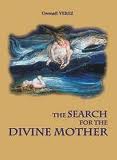Great Goddess proclaims: "There is no distinction between Me and the Kundalini."

"The link between these allegories and the Mother Goddess is sometimes clearly stated, as in the Tao Te Ching, and sometimes obscure, as in the New Testament. In the Devi Bhagavata Purana, the Great Goddess proclaims: 'There is no distinction between Me and the Kundalini'. The Kundalini is the Inner Mother, reflection of the Great Goddess within each being. In the Shri Lalita Sahasranama, a Sanskrit text which lists a thousand names or attributes of the Goddess, one of these is 'Kundalini'. And when the seeker aspires to attain the supreme reality, the spiritual union, it is only the Divine Mother, in Her guise of the supreme energy, the Kundalini, who can lead him."
"Through Her we know the Consciousness,
Of Brahman without duality,
Like a wave of Existence and of Joy.
She has entered all beings,
Within and without
Of each of them, and on all
She shines Her light!"
Bahvricha Upanishad
Mystics throughout the world have spoken of the inner experience of unity with the Self, a reality defined in our language by the Sanskrit term yoga, meaning union, and the word "religion", which comes from the Latin religare, meaning to bind or link.
The union of the individual with the All, with the cosmos, results from an inner process which allows human awareness to focus on the supreme and ultimate reality, the Self, God in us as Jung wrote. This process makes it possible for our attention to go beyond the Ego, the I, and beyond the conditionings nourished by our society, by our education, and by our past in general. It is an inner movement which, like every living thing in the universe, needs energy. This energy puts us in touch with the absolute of our being, our Spirit, hence we can properly call it a Spiritual Energy. Indian tradition, stretching back over thousands of years, has given it a name: Kundalini.
This tradition teaches us that the awakening of Kundalini is what ultimately confers on the purified ascetic, as it did on the Buddha, the total realisation of God, Nirvana.
And yet, Kundalini does not always wait until the seeker is entirely purified before stirring. Responding to the desire for inner growth and spiritual evolution, the Kundalini awakens to bestow Self-Realisation, which opens the way to awareness of the infinite. This experience has been described by many saints from all religious traditions, such as Meister Eckhart and Dante in the Christian tradition, Rumi and Attar for Islam, the early Zen patriarchs, Namdev and Tukaram from India, to name only a few. This experience of Self-Realisation has also been described by outstanding scientists such as Pascal, Einstein and Jung. In this experience the Kundalini spontaneously awakens, giving a spark of absolute reality to the seeker and initiating him into inner knowledge of his own Divine nature. It is then up to him to protect and nurture this light through introspection and meditation.
The awakening of Kundalini is not the end, but the beginning. It is the gate which opens onto the way towards spiritual awareness, union, that is, yoga.
Many masters—and, alas, many false teachers—have taught about Yoga without explaining that it involves the awakening of this spiritual Energy. This has led to confusion, particularly in the West, as mystical union, the ultimate aim of seeking, lost any connection with a living and tangible experience. The prophets of the past, who gave rise to the great religious movements, spoke in allegorical terms of the eternal feminine power which leads to the revelation of our Divine identity. In India it is the Kundalini, described in remarkable terms by Shankaracharya and Jnaneshwar. For Lao Tze it is the Tao, in Jewish mysticism it is the Shekinah, and in the New Testament we find it in the image of the Holy Spirit.
The link between these allegories and the Mother Goddess is sometimes clearly stated, as in the Tao Te Ching, and sometimes obscure, as in the New Testament. In the Devi Bhagavata Purana, the Great Goddess proclaims: "There is no distinction between Me and the Kundalini". The Kundalini is the Inner Mother, reflection of the Great Goddess within each being. In the Shri Lalita Sahasranama, a Sanskrit text which lists a thousand names or attributes of the Goddess, one of these is "Kundalini". And when the seeker aspires to attain the supreme reality, the spiritual union, it is only the Divine Mother, in Her guise of the supreme energy, the Kundalini, who can lead him.
Indian tradition warns us it is difficult to awaken Kundalini, and that only the most dedicated seekers have succeeded, and then only after long years, perhaps lifetimes, of withdrawal from society, penance, and meditation. But, as we shall see, times have changed...
Gwenaël Verez, The Search for the Divine Mother
Amazon Digital Services, Inc., pp. 24-26
Disclaimer: This non-profit site contains copyrighted material the use of which has not always been specifically authorized by the copyright owner. We are making such material available to our readers under the education and research provisions of "fair use" in an effort to advance a better comprehension of controversial religious, spiritual and inter-faith issues. If you wish to use copyrighted material for purposes other than "fair use" you must request permission from the copyright owner.